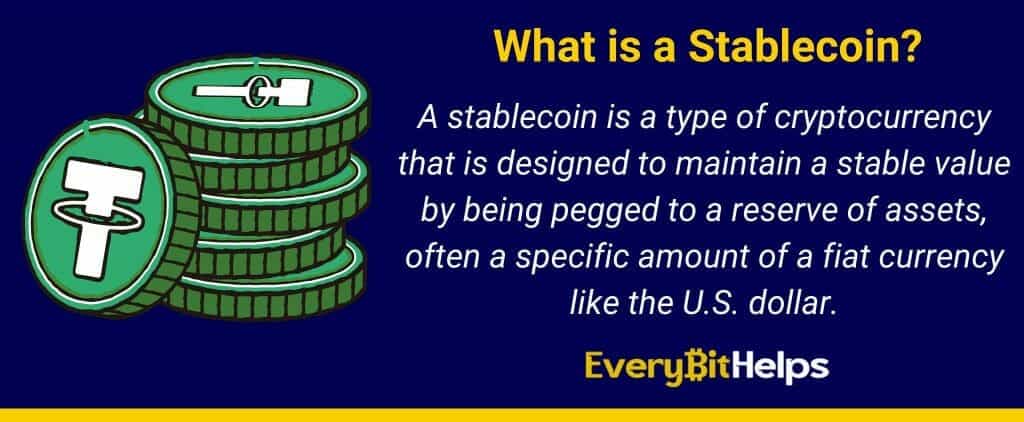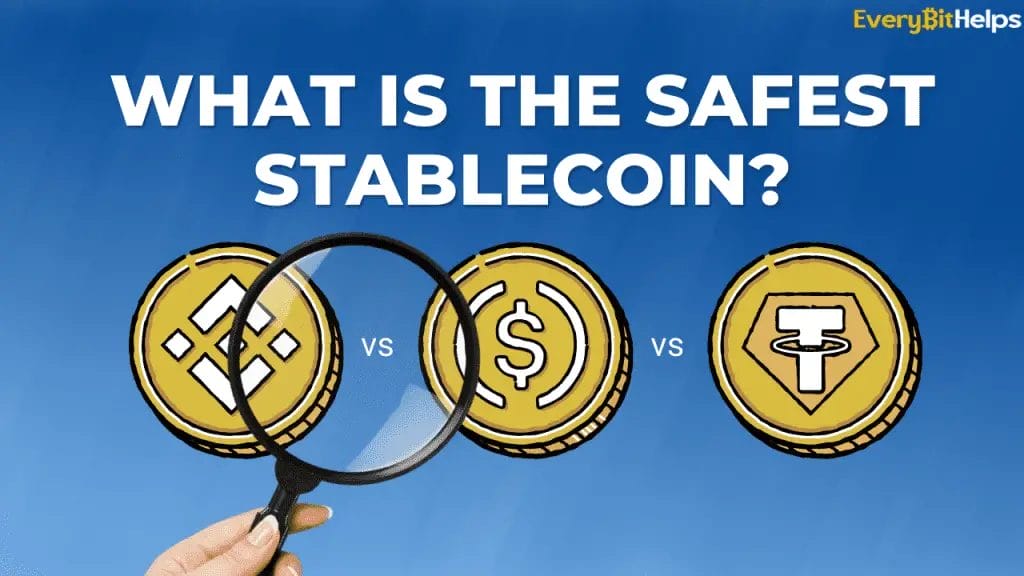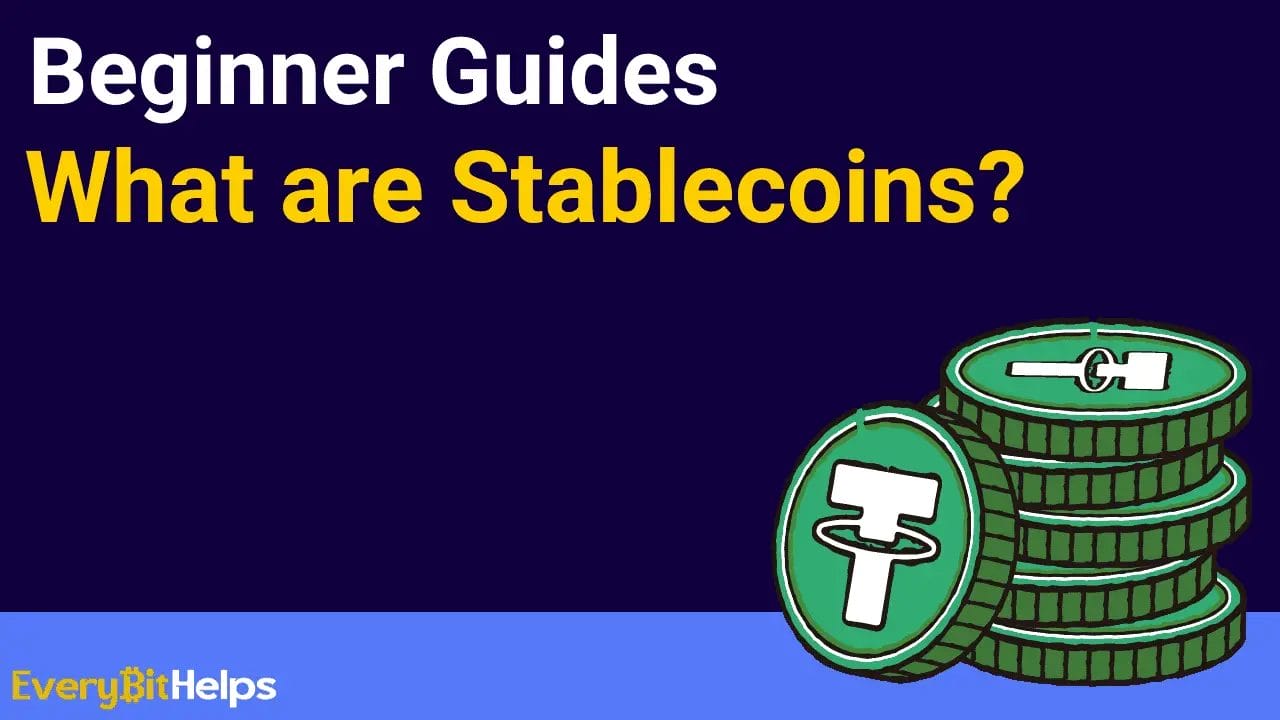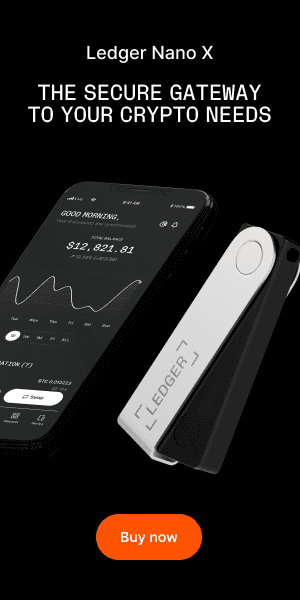In this article, we will discuss what stablecoins are and how they work. We will also look at the different types of stablecoins available, the benefits of using stablecoins, and the most popular.
Stablecoins are a type of cryptocurrency designed to minimize volatility and maintain a stable value. These digital assets are backed by traditional assets such as fiat currency, gold, or other assets, and they provide users with a secure way to store and transfer money.
What are Stablecoins?
Stablecoins are a type of digital currency that is pegged to a fiat currency, like the U.S. dollar or a commodity like Gold and Silver. This means that the value of a stablecoin is always stable relative to the value of the fiat currency it’s pegged to.
If you’re familiar with Bitcoin or Ethereum, those are examples of cryptocurrencies, but they’re not stablecoins. Cryptocurrencies can offer lucrative returns on investment, but they are highly volatile. In a theatrical crypto world, stablecoins are incredibly boring in price action. With stablecoins, you can ensure that your crypto investments remain stable and benefit from the features of the blockchain, for example, transparency, decentralization, and cost-efficiency.
Stablecoins aim to combine the benefits of cryptocurrencies, such as secure and quick transactions, with the stability of traditional currencies. But they are less likely to undergo extreme price fluctuations like Bitcoin or Ethereum, which can change in value very rapidly.
A stablecoin can be used to make purchases, transfer funds, and settle trades between cryptocurrency exchanges. They are also used as a way to hedge against the risk of market volatility.

How do Stablecoins Work?
Stablecoins are issued by a central authority, such as the Federal Reserve, or by a cryptocurrency exchange. Once issued, the value of the underlying fiat currency backs the stablecoin. This means that the stablecoin’s value always equals the value of the fiat currency it is pegged to. This provides stability and security to those who use stablecoins.
Issuing a stablecoin typically involves two parties: the issuer, who issues the stablecoin, and the custodian, who holds the underlying asset and is responsible for ensuring its value. The issuer will issue the coin, which is typically a digital token, and the custodian will hold the underlying asset (usually a basket of fiat currencies or other assets).
Once issued, the stablecoin can be used for payments, transfers, and trades between exchanges. Users can also buy and sell stablecoins against other cryptocurrencies, as well as against fiat currencies. This makes it a great tool for hedging against market volatility, as the stablecoin’s value remains constant regardless of the market conditions.

What are the Benefits of Stablecoins?
Stablecoins, as a type of cryptocurrency, come with several benefits, particularly when compared to traditional fiat currencies and even other types of cryptocurrencies.
- Lower Cost & Competitive Payments: One of the primary benefits of stablecoins is that they often offer lower-cost transactions compared to traditional payment methods. This is particularly advantageous for international transactions, which can be costly and time-consuming through traditional banks. Stablecoins can be transferred across borders without needing currency conversion, thus lowering transaction costs.
- Real-Time Transactions: Stablecoins can be transferred in real-time, which means transactions can be completed much quicker than traditional banking transactions. This is especially beneficial for businesses that need to handle a large volume of transactions quickly.
- Stability: The main feature of stablecoins, as their name implies, is their stability. They are designed to maintain a steady price by being pegged to the value of a more stable asset like a fiat currency or a commodity. This can provide a haven from the volatility often associated with other cryptocurrencies, offering a more predictable investment and transaction tool.
- Accessibility: As digital assets, stablecoins are accessible to anyone with an internet connection. They can therefore serve to bring financial services to those who may not have access to traditional banking systems.
Despite these benefits, it’s also important to note that the stablecoin market continues to be scrutinised by regulators due to concerns about its potential impact on the broader financial system. It’s, therefore, crucial to stay informed about ongoing developments in the regulatory landscape when dealing with stablecoins.
Why are Stablecoins Important for the DeFi Ecosystem?
Stablecoins, such as USDC and USDT, are essential to the DeFi ecosystem because they are used to buy other tokens and speculate on their fluctuating values. USDC is particularly popular in decentralized exchange pools, cross-chain bridges, and as collateral in other stablecoins like DAI, FRAX, and lending marketplaces.
Unlike Tether’s USDT, USDC is perceived as more transparent and less risky, making it popular among crypto startups in the U.S. and Europe. This good reputation and lack of regulatory issues give investors and startups confidence in using USDC for transactions. However, outside the West, USDT is more popular in cross-border trade, especially in Eastern Europe and parts of Asia.
What are the 4 Main Types of Stablecoins?
We will explore the four main types of stablecoins that are prevalent in the cryptocurrency world, from Fiat-Backed Stablecoins like BUSD, USDC, and USDT to Crypto-Collateralized Stablecoins like DAI, Algorithmic Stablecoins and Commodity-Backed Stablecoins like PAXG.
Each type of stablecoin has unique features, security measures, and risks. Whether you are a beginner trader or an experienced investor, understanding the different types of stablecoins is important if you choose to buy one.
1. Fiat-Backed Stablecoins:
Fiat-backed stablecoins are the best and most popular category of stablecoins. Fiat stablecoins like BUSD, USDC and USDT are in the top 10 cryptos today.
One unit of fiat-backed stablecoin equals one U.S Dollar on the blockchain. For each unit issued on the blockchain, the issuing company must have one US Dollar in their bank reserve.
It must be remembered that fiat-backed stablecoins are not the same as US dollars. They are not legal tender and are not backed by any government. With fiat stablecoins like USDT, issuing companies can lie about their reserves, so it is essential to do your due diligence before investing!
2. Crypto-Collateralized Stablecoins:
As the name suggests, crypto-collateralized stablecoins are backed by one or multiple cryptocurrencies. For example, DAI is backed with USDC, PAX Dollar, Wrapped BTC and ETH.
Since cryptocurrencies can be highly volatile, crypto-collateralized stablecoins only issue 40-50% of their reserve value. With crypto-collateralized stablecoins, you can verify the transactions and currency reserves of the issuing company.
However, if the value of two cryptos in reserve falls simultaneously, a crypto-collateralized stablecoin can lose its peg.
3. Algorithmic Stablecoins:
An Algorithmic stablecoin does not necessarily hold a reserve fund but maintains its peg using smart contracts.
When demand for an algorithmic stablecoin increases, the smart contract will mint extra tokens to meet the demand. Similarly, when demand decreases, the smart contract will burn tokens to reduce supply.
As we saw with the fall of US Terra, algorithmic stablecoins are still a work in progress. Algorithmic stablecoins are not recommended to use, especially for beginner traders.
4. Commodity-Backed Stablecoins:
These stablecoins are pegged to the price of precious metals or commodities, for example, gold. A famous example of a commodity-backed stablecoin is PAXG, pegged to one ounce of gold in the London market, or $1800.
As with fiat stablecoins, the issuing company must hold the equivalent value of commodities in its reserves before issuing these stablecoins on the blockchain.
By investing them in a lending protocol, you can earn 8-10% APR on your stablecoins.
In the future, stablecoins will be extremely popular, especially fiat-backed stablecoins. They will be used for cross-border transactions and could replace the US Dollar as a trade currency.
Most Popular Stablecoin
Now we know the different types of stablecoins, let’s look at the most popular stablecoin assets available on the cryptocurrency market;

1. Tether (USDT)
USDT is a stablecoin that uses the US Dollar as its reserve currency. It was created and managed by Tether, a company based in the United States. Transactions in USDT are settled through Tethers holdings of US Dollars in bank accounts.
2. USD Coin (USDC)
USD Coin (USDC) is a digital asset created by a consortium of companies led by Circle and Coinbase. It is built on the Ethereum blockchain and backed by a reserve of US dollars in a 1:1 ratio. USDC facilitates secure, fast, low-cost payments between individuals, businesses, and financial institutions on the Ethereum blockchain.
3. Binance (BUSD)
Binance BUSD is a stablecoin that is pegged to the U.S. dollar. It is issued by Paxos Trust Company and is regulated by the New York State Department of Financial Services. BUSD can be held as a store value or to make payments and is accepted by various merchants and exchanges.
4. DAI (DAI)
The DAI stablecoin is an ERC20 token that uses the Ethereum network. It functions as a digital asset that is backed by collateral in DAI tokens. The DAI tokens are issued by a self-regulating organization called MakerDAO.
5. True USD (TUSD)
The True USD token is an ERC20 token issued by TrustToken, a company based in San Francisco. True USD uses the U.S. dollar as its collateral.
6. Paxos Standard (PAX)
The Paxos Standard token is issued by Paxos, a company based in New York. It is an ERC-20 stablecoin operating on the Ethereum blockchain.
Conclusion
One aspect of this future of Stablecoins involves increased regulatory scrutiny. Calls for regulation of stablecoins have become more prominent, as exemplified by figures like Jerome Powell, chair of the Federal Reserve. This attention stems from the potential financial system risks that could emerge, especially from stablecoins that scale rapidly and are widely used across multiple countries.
Additionally, stablecoins are expected to continue playing a significant role in decentralized finance (DeFi) systems. In these contexts, stablecoins aren’t just mediums of exchange but also serve as collateral, contributing to the thriving ecosystem of DeFi.
In another exciting development, the future of stablecoins could intersect with the emergence of Central Bank Digital Currencies (CBDCs). Some speculate that these digital forms of fiat currency issued by central banks could coexist with or potentially influence the trajectory of stablecoins. An example of such an initiative is China’s e-CNY, a notable pilot version of a CBDC.
In summary, the future of stablecoins likely involves increased regulation, continued prominence in the DeFi space, and possible interactions with emerging CBDCs. However, the exact trajectory will depend on various factors, including regulatory decisions and broader developments in the world of digital currencies.
FAQs
What are Stablecoins Examples?
Examples of stablecoins include; Tether (USDT), TrueUSD (TUSD), USD Coin (USDC), MakerDAO (DAI), Paxos Standard (PAX), Binance USD (BUSD)
Is Bitcoin a Stablecoin?
No, Bitcoin is not a stablecoin. A stablecoin is a type of cryptocurrency designed to maintain a stable value and avoid the volatility of traditional cryptocurrencies such as Bitcoin.
Can you Lose Money on Stablecoins?
Yes, you can lose money with stablecoins. Stablecoins are designed to maintain a stable value, but this does not mean their value cannot change. The value of a stablecoin is linked to an underlying asset, such as a fiat currency or commodity, and changes in the value of this asset can cause the stablecoin to increase or decrease in value. Therefore, it is possible to lose money when investing in stablecoins.
Where Can You Buy Stablecoins?
There are a few different places you can purchase stablecoins. Some exchanges offer them as a trading pair with other crypto assets, while others allow users to buy stablecoins directly with traditional currency.


